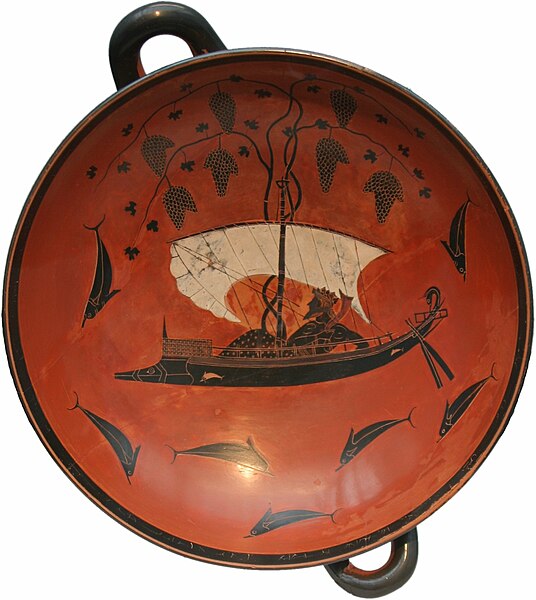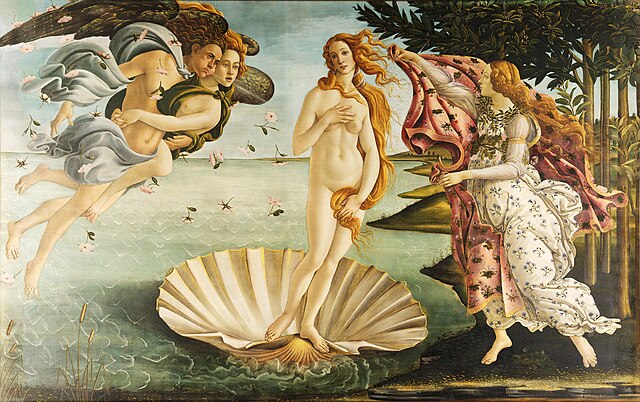The Homeric Hymns are a collection of thirty-three Ancient Greek hymns and one epigram. The Hymns praise individual deities of the Greek pantheon and retell mythological stories, often involving the deity's birth, their acceptance among the gods on Mount Olympus, or the establishment of their cult. In antiquity, the Hymns were generally, though not universally, attributed to the poet Homer: modern scholarship has established that most date to the seventh and sixth centuries BCE, though some are later in date and the latest, the Hymn to Ares, may have been composed as late as the fifth century CE.
A Roman bust of Homer, considered in antiquity to be the poet of the Homeric Hymns, after a Hellenistic version of the 2nd century BCE
Terracotta pinax showing the Abduction of Persephone, from the sanctuary of Persephone at Locri Epizefiri in Calabria, Italy, used between the sixth and the fourth centuries BCE. Persephone's abduction forms the focus of the Hymn to Demeter, which may have been known at Locri.
The Dionysus Cup, a kylix painted by the Athenian Exekias around 530 BCE, possibly showing the narrative of the seventh Homeric Hymn
The Birth of Venus by Sandro Botticelli: a fifteenth-century painting referencing the second Homeric Hymn to Aphrodite
A hymn is a type of song, and partially synonymous with devotional song, specifically written for the purpose of adoration or prayer, and typically addressed to a deity or deities, or to a prominent figure or personification. The word hymn derives from Greek ὕμνος (hymnos), which means "a song of praise". A writer of hymns is known as a hymnist. The singing or composition of hymns is called hymnody. Collections of hymns are known as hymnals or hymn books. Hymns may or may not include instrumental accompaniment. Polyhymnia is the Greco/Roman goddess of hymns.
Arvid Liljelund [de; fi; sv]'s Man Singing Hymn (1884)
In Christianity, church congregations often sing hymns together as part of their worship (Pictured: worshippers at Uffington Parish Church in England, 1944)
Hymns are often accompanied by organ music
Sanskrit manuscript page from the "Vivaha sukta" Rigveda, dated 1500–1200 BCE





![Arvid Liljelund [de; fi; sv]'s Man Singing Hymn (1884)](https://upload.wikimedia.org/wikipedia/commons/thumb/7/70/Arvid_Liljelund_-_Man_Singing_Hymn_-_A_I_187_-_Finnish_National_Gallery.jpg/640px-Arvid_Liljelund_-_Man_Singing_Hymn_-_A_I_187_-_Finnish_National_Gallery.jpg)


